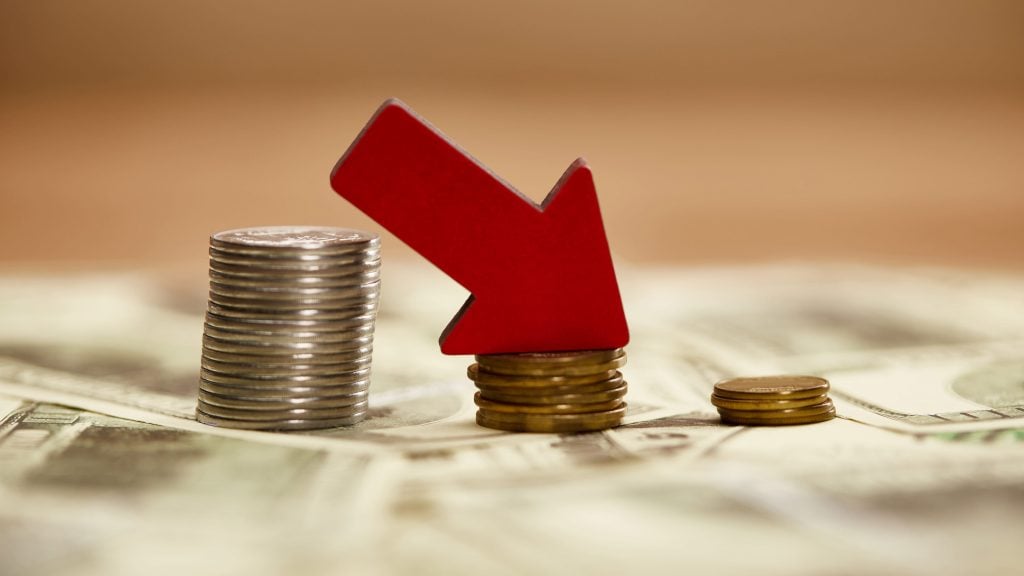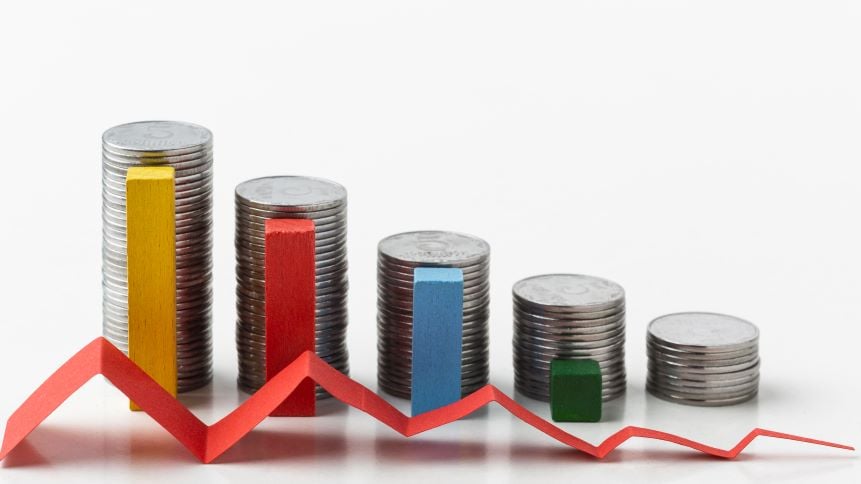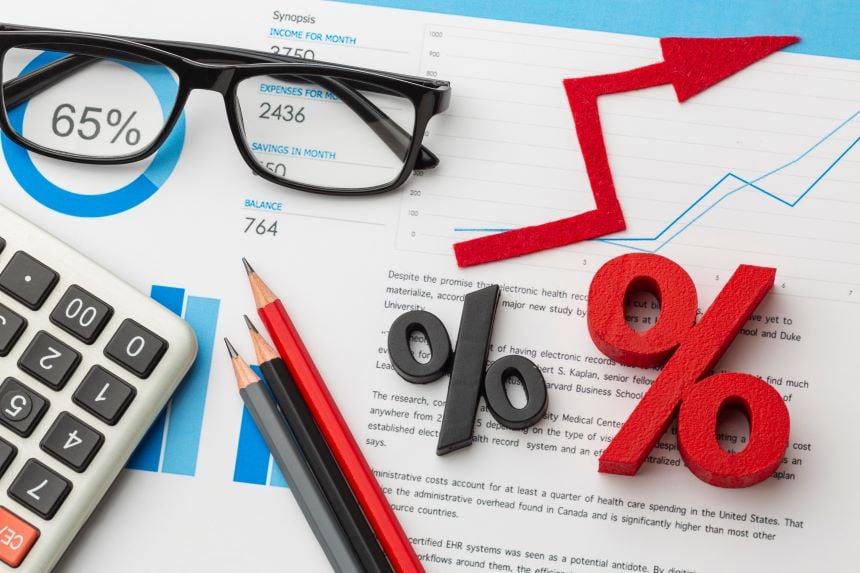Everything You Wanted to Know About Variable Rate Mortgages

Unless you are hiding under a rock, it is impossible that you haven’t heard the Bank of Canada’s announcement of a further cut in the key overnight policy rate. And the hope that this will signal a downward revision in mortgages, especially variable rate mortgages.
Mortgages are a much-feared yet necessary part of buying a home in Canada (well, not if you have enough money stashed away or have rich relatives). About a third of all homeowners in Canada would not have realized their real estate dreams without a mortgage.
On the face of it, a mortgage seems pretty straightforward. However, there are multiple options available, and it can be difficult to decide what suits your needs. While we are not getting into individual needs, this article aims to help you understand the internal workings of mortgages – specifically, variable-rate mortgages.
As the name indicates, this term refers to a mortgage where the interest rate may change. Generally speaking, there are 2 main mortgage types in Canada – fixed-rate and variable-rate mortgages. This blog gives you a detailed overlook of variable-rate mortgages, how they work and the different types available.
Table of Content
What is a Fixed-Rate Mortgage?
Let us first get this one out of the way. It is simpler to understand what a variable rate mortgage is when you know what a fixed rate mortgage means.
A fixed-rate mortgage has the same interest rate for the entire term of your mortgage. In turn, this means that your EMIs are the same throughout the mortgage, making it easier to plan your budget and cash flows.
The biggest advantages of this mortgage type are the predictability and protection against interest rate hikes. This is somewhat offset by the fact that the interest rate on fixed-rate mortgages is often higher. Paying off the loan early can surprise you with significant penalties.

Variable-Rate Mortgages
A variable-rate mortgage is a mortgage option where the interest rate can fluctuate over the term of the mortgage. This is because it’s intrinsically tied to the prime rate which changes based on economic conditions.
In Canada, this is the key overnight policy rate. Currently, after the latest rate cut last week by the Bank of Canada, it is 4.25%.
Quite a few people think that monthly payments will change with the interest rate. However, this is not the case in most mortgages; your payments will stay the same. So, what changes?
Every mortgage payment has 2 apportioned components – the interest and the principal. What changes in the case of a variable-rate mortgage is how much of your payment goes towards interest as against the loan principal.
When the interest rate goes up, a larger portion of your payment goes towards interest. Paying off the principal takes a longer time – you may even be asked to make larger payments. If the rate goes down, you’ll pay less towards interest and more towards the principal and are zooming ahead to your mortgage payoff.

A Closer Look at Variable Rate Mortgages
Typically, variable-rate mortgages start with a lower interest rate than fixed-rate mortgages. While this sounds like an excellent idea, there are some drawbacks that you need to be aware of.
If there is a drop in the interest rate, you can potentially save money on interest, pay off your mortgage faster, or both. In addition, if you need to break your mortgage, penalties for variable-rate mortgages tend to be lower than for fixed-rate ones. And if you change your mind, it is usually a simple matter to switch over to a fixed-rate mortgage.
However, predicting future rate changes is not an exact science and there is an element of financial uncertainty. The consequence of a rise in rates is that you can end up paying more over a longer period. And there is the danger of hitting the trigger rate (where the mortgage payments can no longer cover the principal but only the interest component).
Coping Strategy
One strategy to mitigate this risk is to treat your mortgage like a fixed-rate mortgage.
Since your initial payments are likely lower than with a fixed-rate mortgage, allocate the difference toward prepayments. In fact, set aside some savings or actively save for a fund cushion to fall back on.
This will help you pay off your mortgage faster and reduce the risk of being caught unprepared for a hike in rates.
Types of Variable-Rate Mortgages
There are several types of variable-rate mortgages.
Variable Rate Fixed Payment Mortgages
This is a highly popular type. Here, your payments remain the same each month no matter whether interest rates rise or fall. What changes is the breakup – how much of your payment goes toward interest versus the principal. If rates rise, more of your payment will go toward interest, and vice versa.
Be warned, though. If rates rise too much and your regular payment no longer covers the interest, your payments may increase. This is known as hitting the “trigger rate.”
Variable Rate Variable Payment Mortgages
As the name suggests, both the interest rate and your payment amount can fluctuate in this mortgage type.
Also called an adjustable-rate mortgage (ARM), payments rise and decrease in tandem with the increase and fall of interest rates. The advantage is that you stay on track to pay off the mortgage within the original term, but it is tricky making a budget.
Capped Variable Rate Mortgages
A sort of trading off higher starting costs with a cap on interest rates, a capped variable-rate mortgage places an upper limit on your interest rate. This type of mortgage offers some protection against rising interest rates while still allowing you to benefit from rate drops.
However, you also start with slightly higher rates than regular variable-rate mortgages.
Hybrid Mortgages
Also known as a combination mortgage, a hybrid mortgage allows you to split your loan into two parts: one with a fixed rate and one with a variable rate. You get to enjoy the stability of a fixed rate while still potentially saving with a variable rate. Check with your lender to ensure you understand all the implications and limitations before signing on.
Let’s Talk Terms
Canadian mortgages can be long-term (up to 25 or even 30 years) or short-term (5 years and below). However, variable-rate mortgages are only available in the short-term version.
The most widely opted term is 5 years, which has a higher potential for savings. Typically, variable rates are lower than fixed rates, which can result in significant savings when interest rates fall. In addition, many lenders offer 5-year variable rate mortgages, making it easier for homeowners to shop around for the most competitive rates.
Another option is the 3-year variable mortgage plan. Since the term is shorter, lenders take on lesser risk and often offer lower interest rates. The shorter term gives borrowers more flexibility if they plan to pay off their mortgage early or think they might refinance soon, as a 3-year term offers a quicker renewal process.
Choose the term based on your financial situation – if you’re comfortable with a longer commitment and don’t want the hassle of frequent renewals, a 5-year term might be better.
Summing Up
The variable mortgage rate is influenced by the Bank of Canada’s Prime Rate. When the Prime Rate increases, mortgage interest rates go up, and when the economy slows, the Prime Rate may decrease, leading to lower rates.
Variable-rate mortgages can provide savings when rates are low but come with the risk of rate hikes. They also offer flexibility with lower penalties for early repayment or switching lenders.
The choice depends on your finances, risk tolerance, and the interest rate environment. We just hope that you are better equipped to make an informed decision.
Our recommendation is to consult a professional to help you get a personalized solution for your needs. Contact us for more information.
FAQs About Variable-Rate Mortgages
- Is variable-rate mortgage a risky option?
Yes, there’s an inherent risk involved with variable-rate mortgages because the interest rate can rise, increasing your monthly outflow.
- What is the current variable mortgage rate in Canada?
The variable mortgage rates in Canada depend on the lender, and as of September 2024, range between 5% and 6%. These rates fluctuate with changes to the Bank of Canada’s rate.
- Can I switch from a variable to a fixed-rate mortgage?
Yes, most lenders allow you to convert your variable-rate mortgage into a fixed-rate mortgage during your term. This will be the fixed rate that the lender offers at the time of conversion.
- Will my payments change with a variable-rate mortgage?
It depends on the type of variable-rate mortgage you have.
If you have a fixed payment variable-rate mortgage, your payments will remain the same, but the allocation between interest and principal will change. If you have a variable payment mortgage (ARM), your payments will fluctuate as interest rates change.
- Can I pay off my variable-rate mortgage early?
Yes, though you will have to make variable-rate mortgages generally come with lower prepayment penalties. This can be an attractive option if you want to make lump-sum payments or pay off your mortgage early.
- Are variable-rate mortgages better than fixed-rate mortgages?
Neither is a better option on their own—it depends on your situation.
Variable-rate mortgages can save you money if rates stay the same or drop, but they carry the risk of rising rates. Fixed-rate mortgages offer stability and predictability, but they usually come with higher initial rates.
- Will mortgage rates go down further in 2024 in Canada?
There are no certain answers, but economists expect rates to remain stable or decrease in 2024 as the Bank of Canada tries to balance economic growth with inflation control. If inflation continues to cool down, we might see lower rates.
- Can you lock in a Variable Rate Mortgage?
Yes, you can lock in a variable-rate mortgage at any time, though this might involve some fees.
This means you switch from a variable rate to a fixed rate, securing your interest rate for the rest of your mortgage term. Locking in is useful if you think interest rates will rise.
- Compare Open vs. Closed Variable Rate Mortgages
An open variable rate mortgage allows you to make unlimited pre-payments on your mortgage without penalties. However, the interest rate for an open mortgage is usually higher.
A closed variable rate mortgage has a lower interest rate but limits how much you can pre-pay annually. Most lenders let you pre-pay up to 20% of your mortgage principal each year without penalties.
- Is a Variable Rate Mortgage a good idea?
A variable-rate mortgage can be a good idea for those comfortable with some financial uncertainty and you may save money. However, if rates rise, you could end up paying more in interest.
